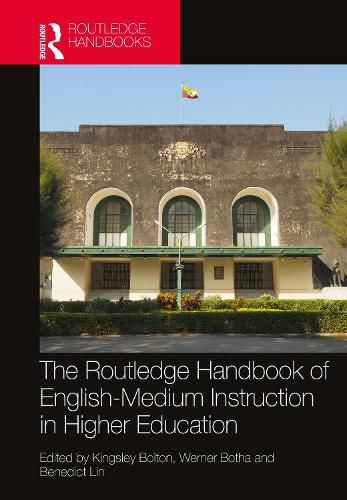Readings Newsletter
Become a Readings Member to make your shopping experience even easier.
Sign in or sign up for free!
You’re not far away from qualifying for FREE standard shipping within Australia
You’ve qualified for FREE standard shipping within Australia
The cart is loading…






This Handbook discusses the theoretical and disciplinary background to the study of English-medium instruction (EMI) in higher education worldwide. It highlights issues relating to EMI pedagogy, varying motivations for EMI education, and the delivery of EMI in diverse contexts across the world. The spread of English as a teaching medium and the lingua franca of the academic world has been the subject of various debates in recent years on the perceived hegemony of the English language and the 'domain loss' of non-English languages in academic communication. Encompassing a wide range of contributions to the field of EMI, the chapters of this Handbook are arranged in four distinct parts: Part I provides an overview of English-medium instruction in higher education worldwide; Part II focusses on EMI in Europe; Part III on EMI in the Middle East, North Africa, and Sub-Saharan Africa; and Part IV on EMI in the Asian region. The overall scope and level of expertise of this Handbook provides an unrivalled overview of this field of education. It serves as an essential reference for many courses dealing with applied linguistics, English language education, multilingualism, sociolinguistics, and related subjects at many levels of education, including Master's and PhD-level studies. This Handbook serves as a valuable edition for university libraries across the world and an essential read for many faculty, undergraduate and postgraduate students, educators, and policymakers.
$9.00 standard shipping within Australia
FREE standard shipping within Australia for orders over $100.00
Express & International shipping calculated at checkout
This Handbook discusses the theoretical and disciplinary background to the study of English-medium instruction (EMI) in higher education worldwide. It highlights issues relating to EMI pedagogy, varying motivations for EMI education, and the delivery of EMI in diverse contexts across the world. The spread of English as a teaching medium and the lingua franca of the academic world has been the subject of various debates in recent years on the perceived hegemony of the English language and the 'domain loss' of non-English languages in academic communication. Encompassing a wide range of contributions to the field of EMI, the chapters of this Handbook are arranged in four distinct parts: Part I provides an overview of English-medium instruction in higher education worldwide; Part II focusses on EMI in Europe; Part III on EMI in the Middle East, North Africa, and Sub-Saharan Africa; and Part IV on EMI in the Asian region. The overall scope and level of expertise of this Handbook provides an unrivalled overview of this field of education. It serves as an essential reference for many courses dealing with applied linguistics, English language education, multilingualism, sociolinguistics, and related subjects at many levels of education, including Master's and PhD-level studies. This Handbook serves as a valuable edition for university libraries across the world and an essential read for many faculty, undergraduate and postgraduate students, educators, and policymakers.